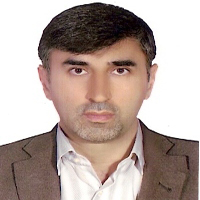Evaluation of amount, emission factors and concentrations of SO2, NO2 and CO in ILAM Gas Refinery
Determination of pollutant emission factors by time is the most important initial data in air pollution modeling. EPA's AP 42 documents provide the most comprehensive emission factor system for all industries based on process type, fuel, and control types. Target of this study, wasto investigate concentrations, emission factors of SO2, NO2 and CO in Ilam gas refinery.
In this study, concentrations of SO2, NO2 and CO and other required parameters such as temperature, pressure, flow rate and diameter of the 6 main stacks were measured by direct field measurements by Testo 350 XL. By results of these measurements and measurements of previous years in the refinery, the mean average for the two normal scenarios and the worst condition, and then the emission values were calculated. Data analysis was carried out with a confidence level of 95%.
The estimated secondry, hourly, daily, monthly, and annual emissions from Ilam gas refinery was calculated and analyzed based on 2 normal and worst-case scenarios. Field measurement of flue concentrations showed that the highest concentrations of carbon monoxide (3565 ppm) and sulfur dioxide (5099 ppm) relates to SRU1 unit, the highest produced nitrogen dioxide (188 ppm) produced by SRU2, 1396 were the most polluted year according to the measured gases. The results of environmental measurements showed that CO at the sewage station is, 4/12 ppm and in Mehran road with an undetectable amount, the lowest amount of NO2 in the Chegae with 0.6 and Mehran road with the undetectable, the lowest amount, the amount of SO2 at the laboratory point with a maximum of 0.13 ppm and in the housing camp with an undetectable amount, the lowest It was.
Considering that the amount of environmental pollution and concentration of pollutants in the production units are more significant. So, planning for corrective actions to reduce emission of pollutants in production units, seems to be necessary. As well as the recovery and reduction of feed of flaring, can have a significant impact on the emission of pollutants.
Gas refinery , concentration , Emission Factor , stack , SO2 , NO2 , CO
- حق عضویت دریافتی صرف حمایت از نشریات عضو و نگهداری، تکمیل و توسعه مگیران میشود.
- پرداخت حق اشتراک و دانلود مقالات اجازه بازنشر آن در سایر رسانههای چاپی و دیجیتال را به کاربر نمیدهد.



